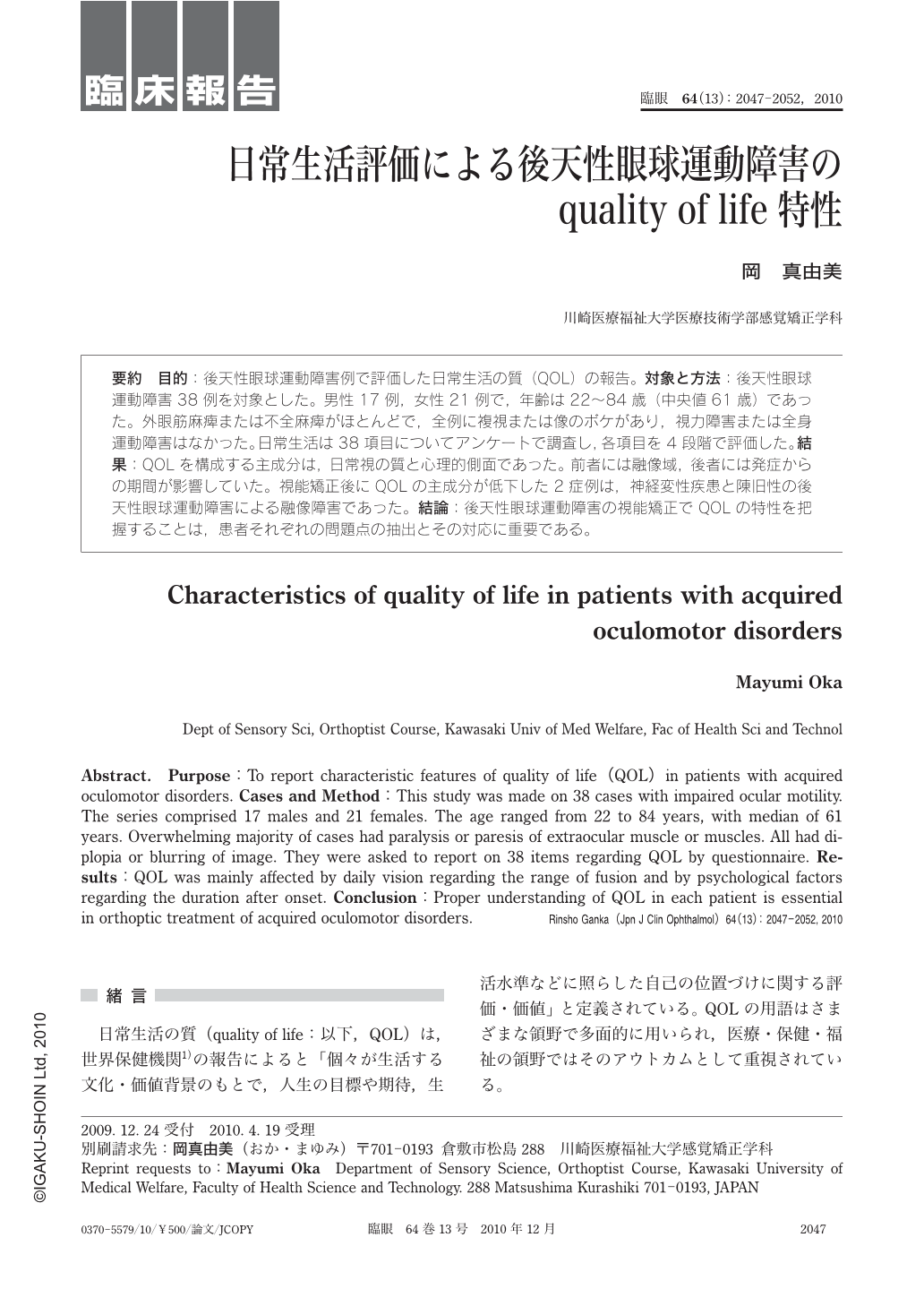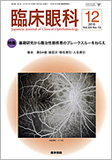Japanese
English
- 有料閲覧
- Abstract 文献概要
- 1ページ目 Look Inside
- 参考文献 Reference
要約 目的:後天性眼球運動障害例で評価した日常生活の質(QOL)の報告。対象と方法:後天性眼球運動障害38例を対象とした。男性17例,女性21例で,年齢は22~84歳(中央値61歳)であった。外眼筋麻痺または不全麻痺がほとんどで,全例に複視または像のボケがあり,視力障害または全身運動障害はなかった。日常生活は38項目についてアンケートで調査し,各項目を4段階で評価した。結果:QOLを構成する主成分は,日常視の質と心理的側面であった。前者には融像域,後者には発症からの期間が影響していた。視能矯正後にQOLの主成分が低下した2症例は,神経変性疾患と陳旧性の後天性眼球運動障害による融像障害であった。結論:後天性眼球運動障害の視能矯正でQOLの特性を把握することは,患者それぞれの問題点の抽出とその対応に重要である。
Abstract. Purpose:To report characteristic features of quality of life(QOL)in patients with acquired oculomotor disorders. Cases and Method:This study was made on 38 cases with impaired ocular motility. The series comprised 17 males and 21 females. The age ranged from 22 to 84 years,with median of 61 years. Overwhelming majority of cases had paralysis or paresis of extraocular muscle or muscles. All had diplopia or blurring of image. They were asked to report on 38 items regarding QOL by questionnaire. Results:QOL was mainly affected by daily vision regarding the range of fusion and by psychological factors regarding the duration after onset. Conclusion:Proper understanding of QOL in each patient is essential in orthoptic treatment of acquired oculomotor disorders.

Copyright © 2010, Igaku-Shoin Ltd. All rights reserved.


